For foreign tourists visiting Japan, the Shinkansen (bullet train) is an essential mode of transportation between tourist destinations. World-renowned for its speed, accuracy, and comfort, the Shinkansen is considered a must-experience aspect of any trip to Japan. However, for foreign travelers unfamiliar with Japan’s unique railway system and facing language barriers, the Shinkansen reservation process may seem somewhat complicated.
This article provides a detailed guide to Shinkansen reservation methods specifically for foreign travelers. We’ll thoroughly explain each option including station ticket machines, Midori-no-madoguchi (ticket offices), and the most convenient online reservations, along with their respective advantages and disadvantages. If you’re planning to visit Japan, this guide will be an invaluable resource.
- Essential Shinkansen Information to Know Before Booking
- Shinkansen Reservation Method 1: Station Ticket Machines
- Shinkansen Reservation Method 2: Midori-no-madoguchi (Ticket Office)
- Shinkansen Reservation Method 3: Online Booking (Most Recommended)
- Shinkansen Reservation Method for JR Pass Holders
- Best Practices for Shinkansen Reservations
- Useful Information to Know
- Which Reservation Method is Best? Recommendations by Situation
- Conclusion
Essential Shinkansen Information to Know Before Booking
Before diving into the reservation details, here’s some basic information about the Shinkansen that you should know.
Shinkansen Network
Japan’s Shinkansen network consists primarily of the following lines:
- Tokaido/Sanyo Shinkansen: From Tokyo to Osaka, Hiroshima, and Hakata (Fukuoka)
- Tohoku Shinkansen: From Tokyo to Sendai and Shin-Aomori
- Hokkaido Shinkansen: From Shin-Aomori to Shin-Hakodate-Hokuto
- Joetsu/Hokuriku Shinkansen: From Tokyo to Niigata and Kanazawa
- Kyushu Shinkansen: From Hakata to Kagoshima-Chuo
Using these lines, you can smoothly travel between Japan’s major cities.
Types of Shinkansen Trains
There are several types of Shinkansen trains with different speeds and stopping patterns:
- Nozomi: Fastest type, stopping only at major stations
- Hikari: Semi-express type, stopping at medium-sized stations
- Kodama: Local type, stopping at all stations
- Mizuho: Fastest type in the Kyushu region
- Sakura: Semi-express type in the Kyushu region
- Tsubame: Local type in the Kyushu region
- Hayabusa: Fastest type in the Tohoku/Hokkaido regions
- Hayate: Semi-express type in the Tohoku region
- Kagayaki: Fastest type in the Hokuriku region
Important: If you’re using a JR Pass, you cannot ride the “Nozomi” and “Mizuho” trains without paying an additional fee. Keep this in mind when making reservations with a JR Pass.
Seat Classes
The Shinkansen primarily offers two types of seat classes:
- Standard Class: Comfortable 3+2 seating configuration
- Green Car (First Class): More spacious 2+2 seating with enhanced services
Additionally, some Shinkansen trains offer “Gran Class,” a premium service equivalent to airline first class.
Shinkansen Reservation Method 1: Station Ticket Machines
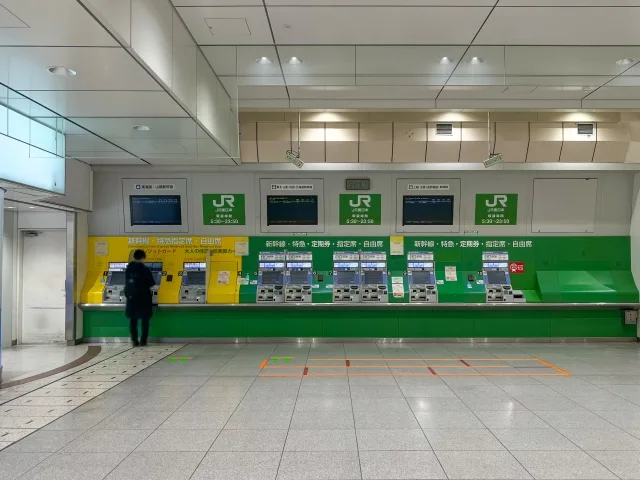
Advantages
- Can be purchased immediately upon arrival in Japan
- Payment possible with credit cards or cash
- Many machines now offer English-language interfaces
Disadvantages
- May involve waiting times during busy periods
- May not handle complex routes or special requests easily
- Not all station machines offer multilingual support
How to Use
- Find a ticket machine at the station (usually yellow or white)
- Change the language to English using the button in the upper right corner
- Select “Reserved Seat Ticket”
- Specify your travel date, departure station, and arrival station
- Select your desired train time
- Choose your seat type (Standard/Green Car)
- Select your seat position (window/aisle)
- Choose your payment method and pay the fare
- Collect your ticket
Note: Ticket machines allow reservations up to one month in advance. Both reserved and non-reserved seats can be purchased, but reserved seats are recommended during peak travel periods.
Shinkansen Reservation Method 2: Midori-no-madoguchi (Ticket Office)
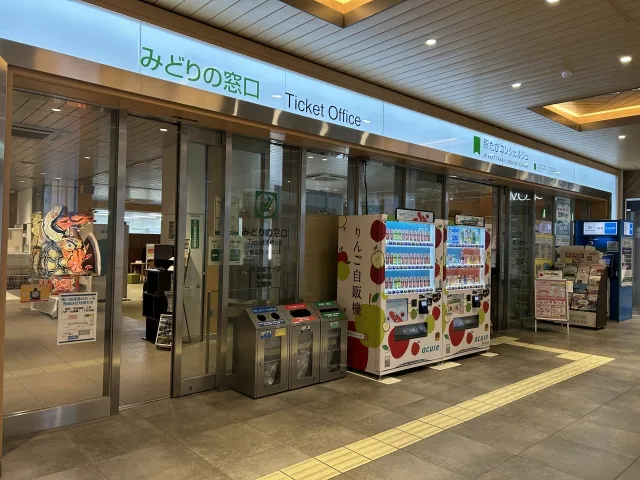
Advantages
- Direct inquiries with staff
- Can handle complex routes and special requests
- JR Pass exchange and reservation can be done simultaneously
Disadvantages
- Potential language barriers (though staff at major stations usually speak English)
- Possibly long wait times during busy periods
How to Use
- Find the “Midori-no-madoguchi” (Green Window) in the station
- Take a numbered ticket and wait to be called
- Explain your desired itinerary to the staff:
- Date and time you want to travel
- Departure and arrival stations
- Desired train type (Nozomi, Hikari, etc.)
- Seat class (Standard/Green Car)
- Seat preferences (window/aisle, forward-facing, etc.)
- Number of passengers
- Confirm the train and seats suggested by the staff
- Pay the fare and receive your tickets
Tip: Visit between 10 AM and 4 PM to avoid crowds. Staff at major stations (Tokyo, Kyoto, Osaka, etc.) often speak English.
Shinkansen Reservation Method 3: Online Booking (Most Recommended)

Advantages
- Can be reserved before arriving in Japan
- No waiting time, available 24/7
- Services available in multiple languages
- Real-time seat availability check
Disadvantages
- Some services charge booking fees
- Services vary in terms of covered routes and payment methods
Recommended Online Reservation Services
1. JR East “Eki-Net”
“Eki-Net” is the official reservation website operated by JR East. It covers Tohoku, Joetsu, Hokuriku, and Hokkaido Shinkansen lines.
How to Use:
- Register with Eki-Net (English page available)
- Search for your desired train after logging in
- Select your preferred train and seat
- Pay by credit card
- Collect your ticket from a reserved seat ticket machine at the station
Note: Some foreign-issued credit cards may not be accepted. Also, a Japanese address may be required for registration in some cases.
2. Smart EX
Smart EX is a service for reserving Tokaido/Sanyo Shinkansen trains (Tokyo-Osaka-Hakata route). The service has been available for foreign visitors since 2017, with both a dedicated app and English-language website.
How to Use:
- Download the Smart EX app or access the website
- Register as a member (available for foreign residents and foreign-issued credit cards)
- Search and reserve your desired train
- Link your payment to an IC card (Suica, PASMO, etc.) or reservation number
- On the day of travel, touch your IC card at the ticket gate or collect your ticket from a dedicated machine
Benefits: Paperless travel is possible using an IC card. Reservations and payments can be made in advance from your home country, with no annual fee. Reservations can be made up to one year in advance.
3. Japan Travel by NAVITIME
Launched in January 2024, this is a Shinkansen ticket booking service specifically for foreign tourists. It allows travelers unfamiliar with Japanese to easily book JR Shinkansen tickets nationwide.
How to Use:
- Access the Japan Travel by NAVITIME website or app
- Search and reserve your desired train
- Pay by credit card
- Receive a QR code to exchange for tickets at designated stations
Benefits: Support available in 7 languages, with detailed guidance on QR ticket exchange and boarding procedures. The service also features a warning function when selecting stations not supported by QR ticket issuance, offering peace of mind for foreign travelers.
4. JR-West “e5489”
JR West’s online reservation service covers Sanyo and Hokuriku Shinkansen lines.
How to Use:
- Access the website and register as a member
- Search and reserve your desired train
- Pay by credit card
- Note the reservation number and collect your ticket from a reserved seat ticket machine at the station
5. Japan Rail Pass Official Reservation Site
For those planning to purchase or already holding a JR Pass, reserved seats can now be booked through the JR Pass official site. As of October 2023, “Nozomi” and “Mizuho” trains can also be used with additional fees.
How to Use:
- Access the JR Pass official site
- Enter your JR Pass reservation or pass number
- Search and reserve your desired train
- Note the reservation number and exchange it together with your pass at a JR station in Japan
Note: The JR Pass underwent a significant price increase in October 2023, with the 7-day Standard Pass rising from approximately 29,650 yen to 50,000 yen. To use “Nozomi” and “Mizuho” trains, purchase of a special additional ticket called “Nozomi/Mizuho Usage Ticket” is required.
Third-Party Reservation Services
The following services are also popular among foreign tourists:
- Klook: Simple English interface for Shinkansen ticket reservations
- Voyagin: Multilingual travel service that also offers Shinkansen ticket reservations
- JAPANiCAN: Service for booking Shinkansen tickets and accommodations together
These services charge booking fees but are convenient for their language support and ability to book before arriving in Japan.
Shinkansen Reservation Method for JR Pass Holders
The JR Pass (Japan Rail Pass) is a special pass for foreign tourists visiting Japan that allows unlimited rides on JR Group trains, buses, ferries, and Shinkansen for a specified period (7, 14, or 21 days). Since the October 2023 revision, “Nozomi” and “Mizuho” trains can also be used with additional fees.
How to Reserve Shinkansen with a JR Pass
- Reservation at Midori-no-madoguchi:
- Present your JR Pass and communicate your desired train and seats
- Reservations are free
- Receive your ticket on the spot
- Reservation on the JR Pass Official Site:
- Use the reservation number issued when purchasing your JR Pass
- Select and book your desired train online
- Note the reservation number and exchange it for a ticket at a Midori-no-madoguchi
- To Use “Nozomi” and “Mizuho” Trains:
- Purchase the dedicated “Nozomi/Mizuho Usage Ticket” before boarding
- Sample fares: Tokyo to Nagoya (4,180 yen), Tokyo to Shin-Osaka (4,960 yen), Shin-Osaka to Hakata (4,960 yen)
- Available at JR ticket offices (Midori-no-madoguchi), reserved seat ticket machines, and travel centers
Notes:
- The JR Pass underwent a significant price increase in October 2023, with the 7-day pass rising from 29,650 yen to 50,000 yen
- The “Nozomi/Mizuho Usage Ticket” is only valid when used together with the pass
- Standard Pass holders can only purchase Standard Class reserved or non-reserved seat tickets
- You can board non-reserved seats without a reservation, but you might not get a seat during busy periods
- It’s recommended to make reserved seat reservations well in advance
Best Practices for Shinkansen Reservations
Timing Your Reservation
- Peak Seasons (Golden Week, Obon, New Year): Recommend reserving at least a month in advance
- Regular Seasons: Reserving a week to a few days in advance is usually sufficient
- Same-Day Reservations: Possible, but popular trains may be sold out
Choosing Your Seat
- Window: Recommended for those who want to enjoy the scenery
- Aisle: Convenient for those who plan to move frequently
- Forward-Facing: Recommended for those prone to motion sickness
- Group Seats: Facing seats ideal for group travel
Collecting Your Tickets
- Reserved Seat Ticket Machines: Collect using your reservation number or the credit card used for booking
- Midori-no-madoguchi: Present your reservation number and identification (passport, etc.)
- Delivery Service: Some reservation services offer delivery to hotels within Japan
Cancellation and Change Procedures
- Cancellation: Possible before the scheduled departure time (fees may apply)
- Changes: In most cases, you’ll need to cancel and make a new reservation
- Refunds: Full or partial refunds possible depending on when you cancel
Useful Information to Know
On-board Services
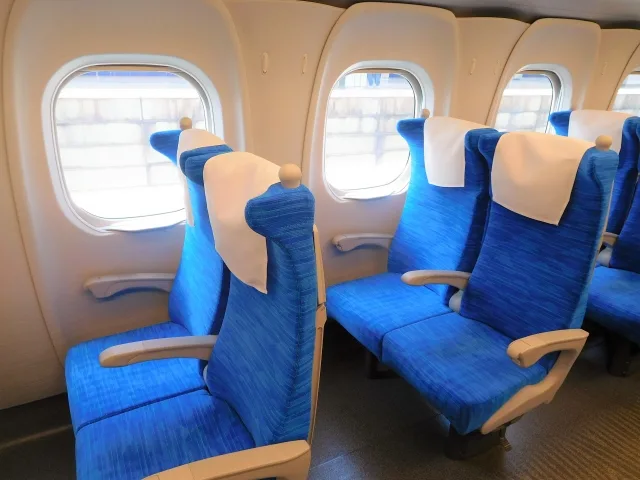
- Cart Service: Drinks and light snacks are sold from trolleys
- Ekiben: Station bento boxes available for purchase at station concourses are a Japanese culinary experience
- Wi-Fi: Free Wi-Fi available on most Shinkansen trains
- Power Outlets: Most seats are equipped with power outlets
Luggage Information
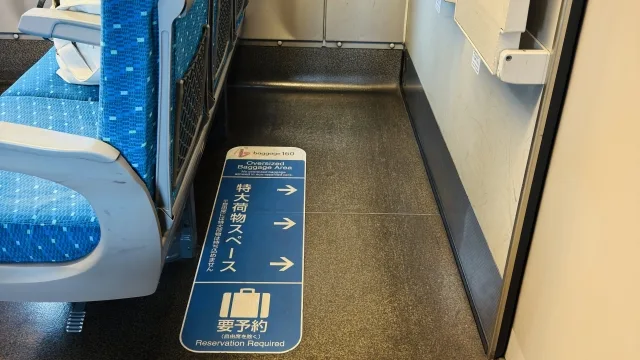
- Luggage Storage: Space for large luggage at the ends of each car
- Overhead Racks: Suitable for small to medium-sized suitcases
- Extra Large Luggage Space Seats: For particularly large luggage, select “Extra Large Luggage Space Seats” when booking (no additional charge, advance reservation required)
Transfer Information
- Transfer Time: Check transfer platforms and times on the JR official app or station display boards
- Signage: Major stations have English signs
- Station Staff: Don’t hesitate to ask station staff if you have questions
Which Reservation Method is Best? Recommendations by Situation
For Foreign Tourists Who Don’t Speak Japanese

Best Reservation Method: Online Booking
Reasons:
- Multilingual interfaces
- Choose at your own pace
- Can be reserved before arriving in Japan
- Visual comparison of options
Recommended Services: Smart EX, JR Pass Official Site, Klook
For Short Stays with Specific Travel Dates
Best Reservation Method: Online Booking or Midori-no-madoguchi
Reasons:
- Ensures seat availability
- Allows selection of optimal trains for your itinerary
For JR Pass Users
Best Reservation Method: Midori-no-madoguchi or JR Pass Official Site
Reasons:
- Pass activation and reservation can be done simultaneously
- Confirmation of which train types are available
- Reserved seats secured without additional fees (except for Nozomi/Mizuho)
For Same-Day Reservations
Best Reservation Method: Smart EX App or Station Ticket Machines
Reasons:
- Real-time seat availability check
- Immediate ticket acquisition
Conclusion
Japan’s Shinkansen is a world-famous transportation system known for its speed and punctuality. While there are multiple reservation methods, considering language support and convenience, online booking is most recommended for foreign tourists. Particularly for those who want to plan ahead or have language concerns, English-language online services enable smooth travel planning.
For JR Pass holders, reservation at Midori-no-madoguchi or through the JR Pass official site is convenient. For short-stay travelers with specific travel dates, early online reservation is recommended for peace of mind.
Regardless of which reservation method you choose, Japan’s Shinkansen offers exceptional comfort and scenic views. Enjoy your fast, comfortable, and safe journey!
References:
- JR East Official Site “Eki-Net”, https://www.eki-net.com/en/, accessed April 28, 2025
- JR Central Official Site “Smart EX”, https://smart-ex.jp/en/, accessed April 28, 2025
- Japan National Tourism Organization (JNTO) “How to Ride the Shinkansen”, https://www.japan.travel/en/guide/shinkansen/, accessed April 28, 2025
- JR West Official Site “e5489”, https://www.westjr.co.jp/global/en/ticket/e-ticket/, accessed April 28, 2025
- Japan Rail Pass Official Site, https://japanrailpass.net/, accessed April 28, 2025
- NAVITIME “Japan Travel by NAVITIME”, https://japantravel.navitime.com/en/, accessed April 28, 2025
- NAVITIME Japan Press Release “Launch of JR Shinkansen Ticket Booking Service for Foreign Visitors to Japan”, https://corporate.navitime.co.jp/topics/pr/202401/31_5699.html, accessed April 28, 2025
- Japan Rail Pass “Using Nozomi and Mizuho”, https://japanrailpass.net/use/special-ticket/, accessed April 28, 2025
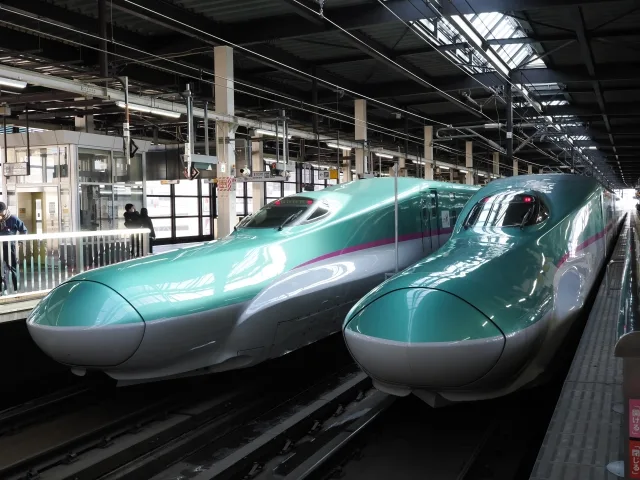


コメント